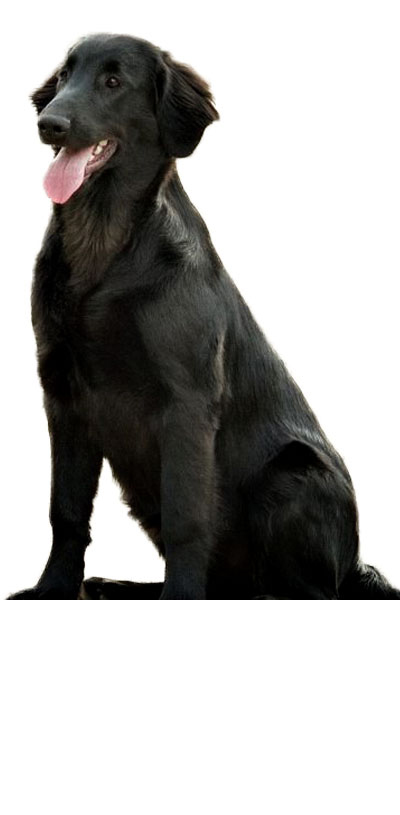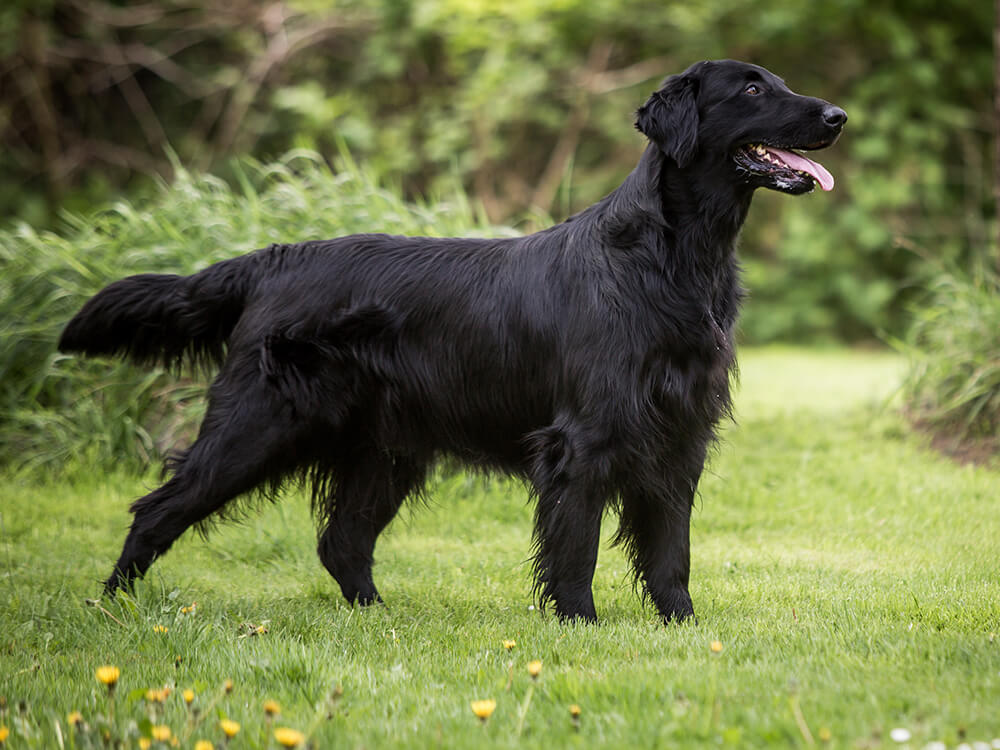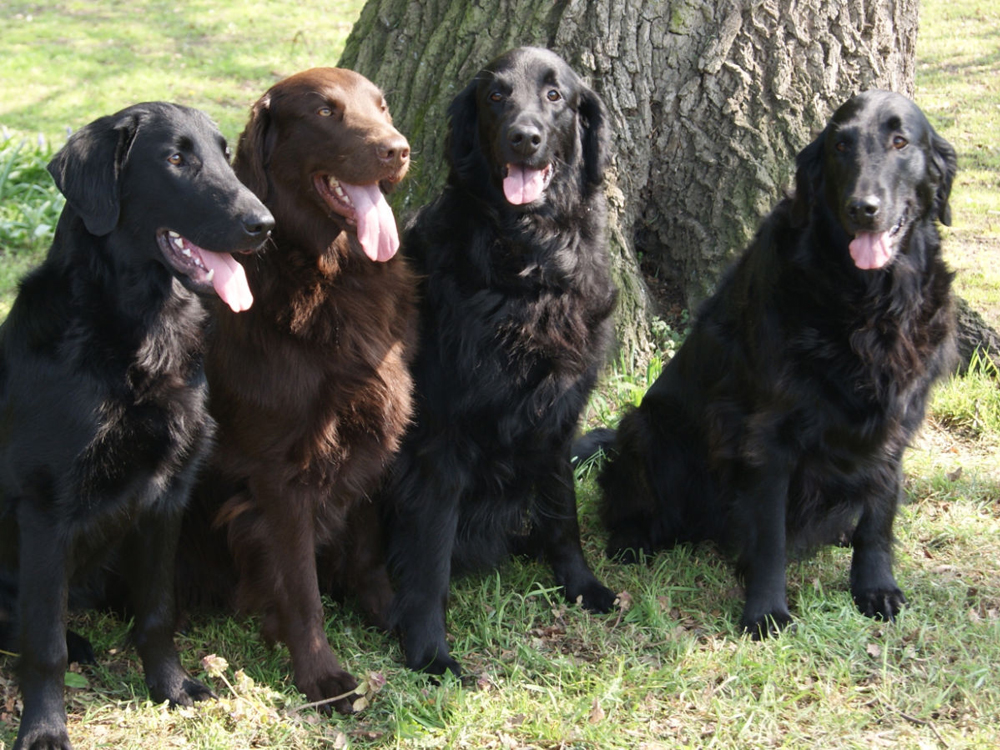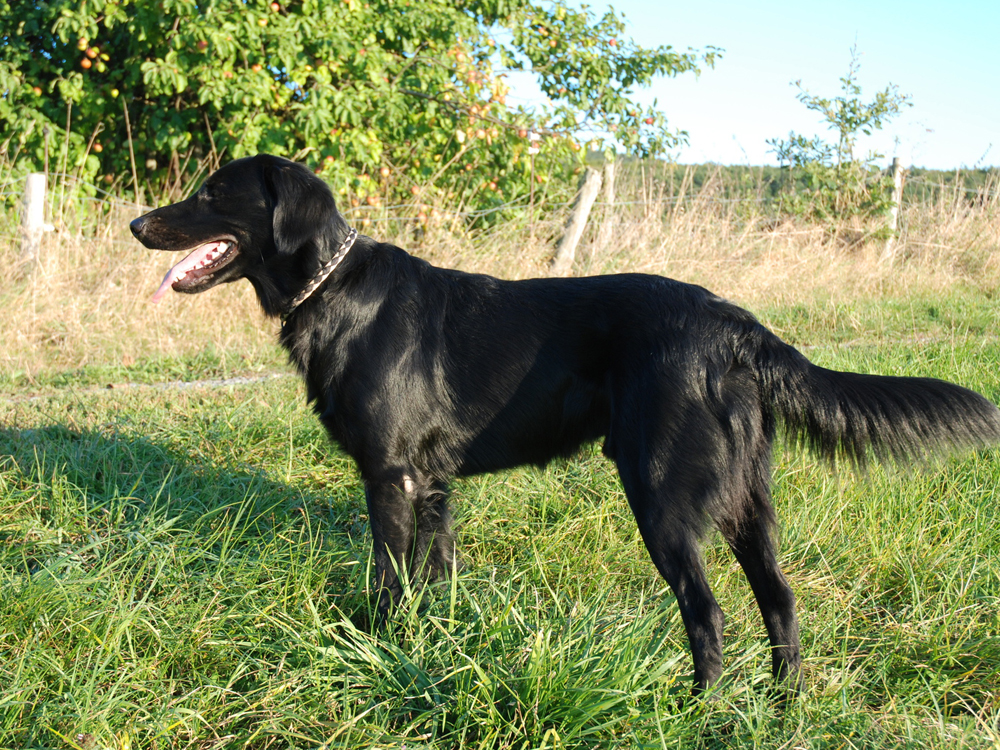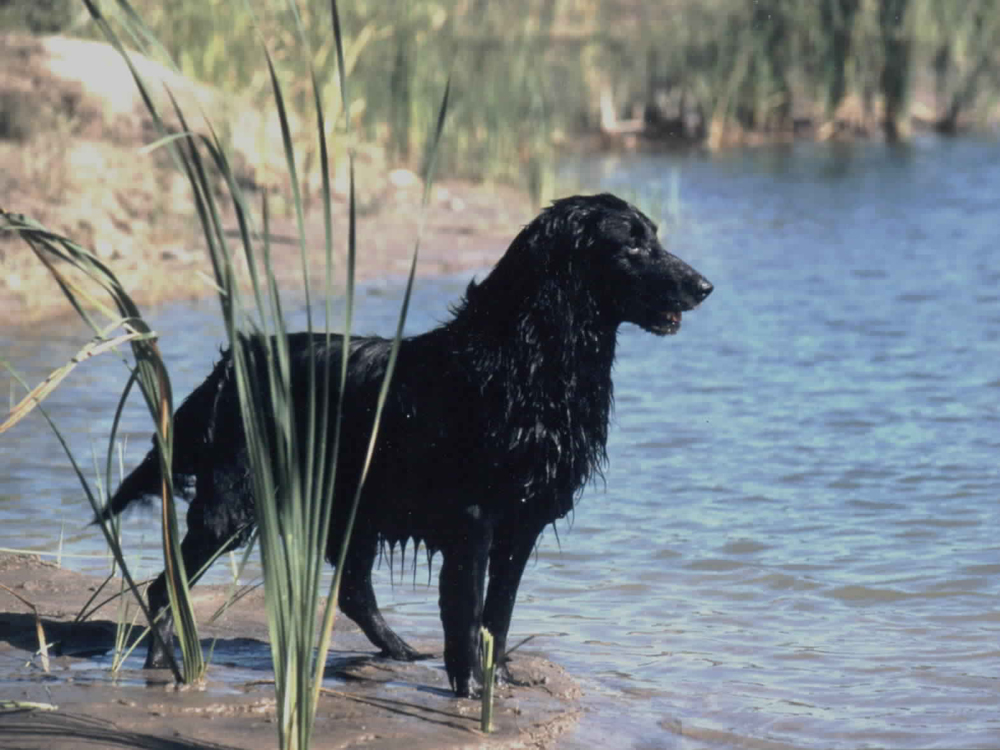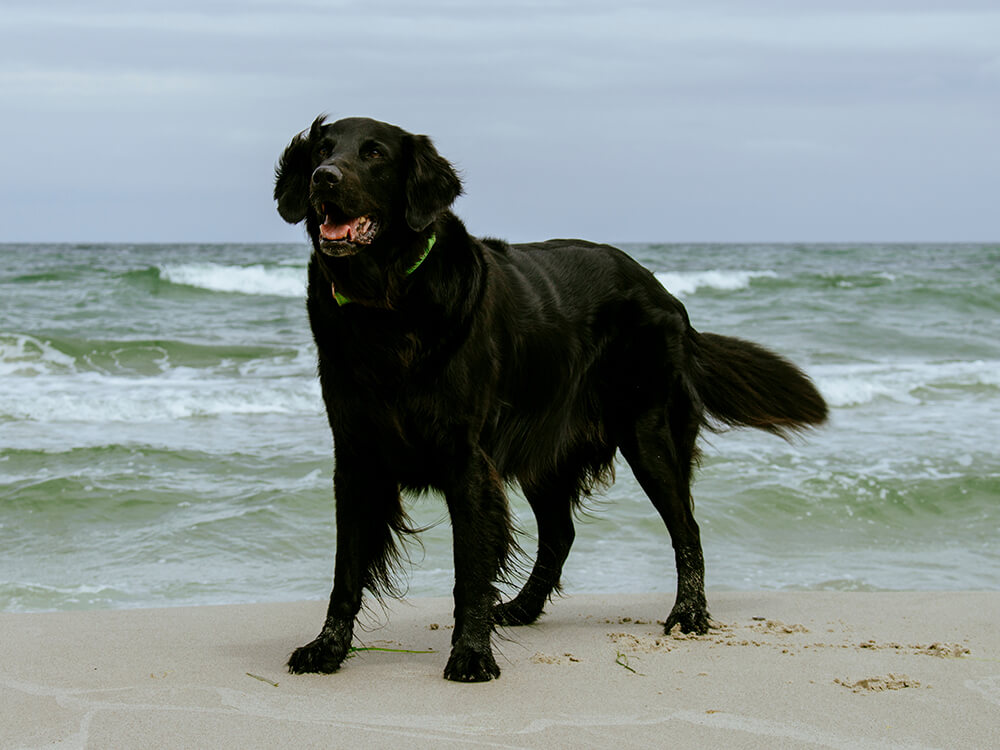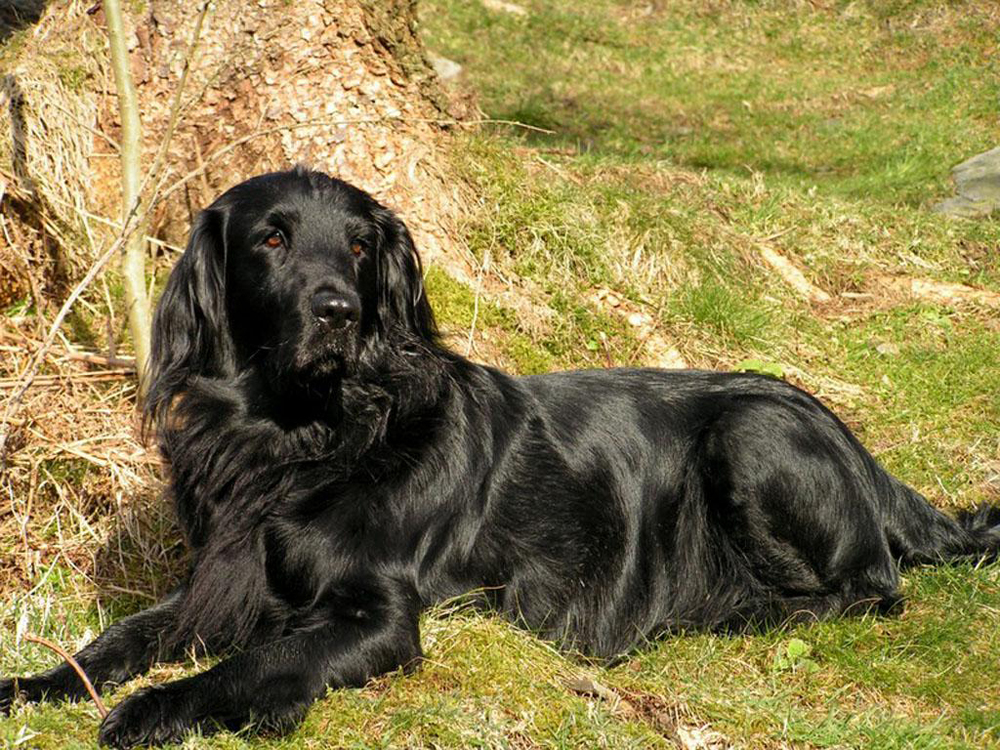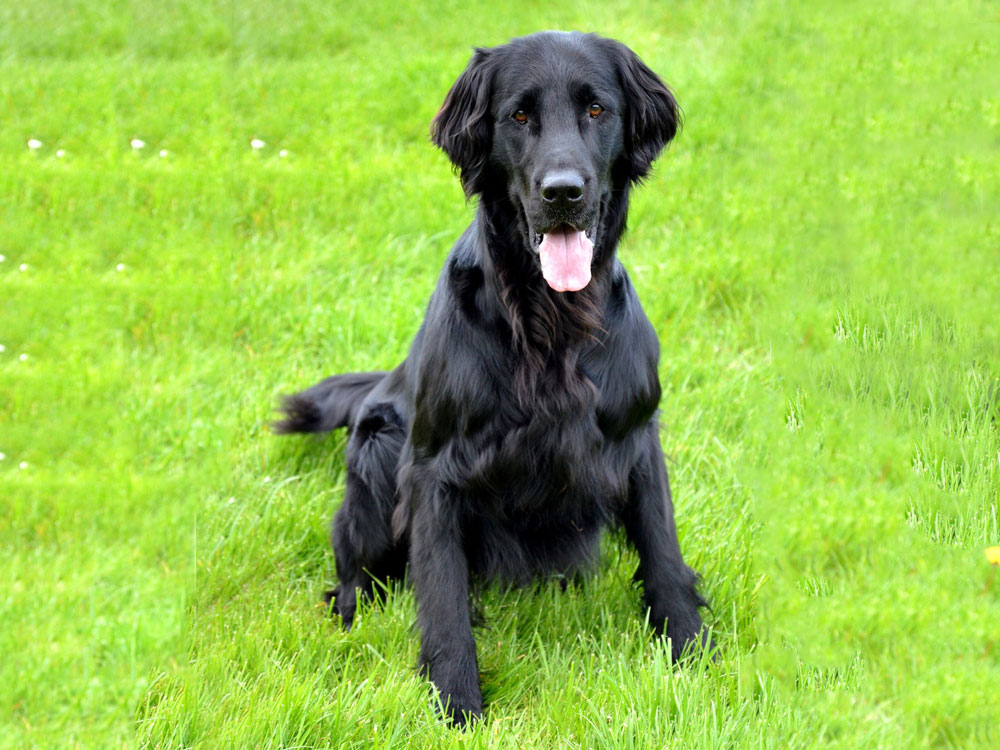
Flat coated Retriever Breed Pictures
Vital Breed Stats
| Height: | 56 - 58 cm M | 56 - 58 cm F |
| Weight: | 27 - 32 kg M | 27 - 32 kg F |
| Breed Group: | Gundog Dog Group |
| Life Expectancy: | 7 - 10 years |
| KC Registered: | No |
Breed Characteristics
| Size: |  |
| Grooming: |  |
| Exercise Level: |  |
| Trainability: |  |
| Barking Level: |  |
| Good with Children: |  |
| Good with other pets: |  |
| Affectionate: |  |
| Protective: |  |
| Cost to Keep: |  |
Give a thumbs up if you love the Flat coated Retriever

0
More About the Breed
History
Due to the Flat-coated Retriever's bouncy nature, the earliest of its breed was a dog called Old Bounce. Old Bounce was the first dog that provided its owner, a gamekeeper named J. Hull, a strain to develop flatcoats in 1864.
However, much to J. Hull's dismay, the people primarily credited to the breed's development were S.E Shirley and H.R Cooke, whose work developed the stable, fine field and show Flat-coated Retrievers we see today. Flatcoats were the most favoured hunting dogs through the end of World War I until Labradors, and golden retrievers stole the flatcoats' accolades. With this decline in popularity, flatcoats also declined in numbers. In mid-1960, a few of the breed's enthusiasts were able to save it from the brink of extinction, but sadly it never regained its lost popularity.
The Flat-coated Retriever is, until this day, a rare breed and is registered with the Kennel Club in the UK. Reports claim that the number of puppies bred and registered with the Kennel Club is slowly on the rise as more people recognise the breed's charming and hardworking personality.
Appearance
The Flat-coated Retriever is a splendid sporting dog with a shiny black coat, albeit it also appears in dark liver colours. This breed is considered a large dog, standing 56–61 centimetres at the withers and weighing 55–70 pounds. It is lean, athletic, and highly energetic. The head is nicely formed and defined as 'of one piece.' It has a flat skull, and the back part is about the same length as its muzzle. Its eyes are almond-shaped, either hazel or dark brown in colour, with an intelligent and friendly expression. The ears are well set, relatively small, pendant-shaped, and lying close to the head. This breed must be angular from the front and rear to allow for open and graceful movement.
The flatcoat is outfitted in a thick coat that is straight, flat, and moderate in length, able to protect the breed from water and harsh weather. Its coat is slightly heavier around the neck, whilst there is feathering on the ears, chest, front, thighs, backs of the forelegs, and tails, but should never be excessively long. Flatcoats come in solid black, liver, or deep reddish brown colours.
Grooming
Since the Flat-coated Retriever has a medium to long coat, it needs to be brushed daily to avoid matts and tangles from forming, most particularly when it is shedding.
Also, don't forget other grooming regimens aside from coat care. Trim its nails at least once a month to avoid painful overgrowth and getting your shins scratched. Ears must also be cleaned with a soft cotton moistened with a vet-approved solution to prevent infection. Brush the flatcoat's teeth at least twice a week to remove tartar and bacteria that may develop into an infection.
Temperament
Intelligence
The flatcoat will shower its family with affection. It is also sociable with strangers, which makes it a poor watchdog. And it is not only friendly with strangers, but also gets on well with other household pets, including cats, despite its history of being an all-around hunting companion. It is very friendly with active older children, but can be overwhelming for younger children. It is important that any interaction is supervised by an adult to avoid it from accidentally knocking the young children over.
The flatcoat needs enough space to move around, whether indoors or outdoors. This dog is a great choice for new owners because it is easy to train and eager to please. Owners must also take note that a flatcoat is high-maintenance when it comes to its exercise needs and will require a lot of mental stimulation to become happy and well-rounded.
Nutrition
- Senior and less active: up to 1,420 calories daily
- Typical adults: up to 1,600 calories daily
- Physically active/working dogs: up to 1,780 calories daily
Feeding
Health
Exercise
Cost of Ownership
The cost to own a dog in its entire lifespan is not easy considering it will become a member of your family. Whilst you can't put a price on the joy and companionship that a dog will bring into your life, you don't want to reach a point where financial hurdles will force you to give your dog up. Before you go and buy a flat-coated retriever, you must organise your financial priorities first and think if you can afford to raise the dog at all. If you have no inkling as to how much it will cost you, below is a rough overview of the expenses.
- The puppy price for a purebred is £700 to £900.
- Pet insurance will help defray costs for medical care and will cost around £20 to £50 a month.
- Regular preventive care through veterinary consultations will cost you at least £1,000 annually.
- Food costs for premium, breed-specific dog food is somewhere around £50 to £60 a month.
Is a Flat coated Retriever Right for You?
- The Flat-coated Retriever is an affectionate, playful, and friendly dog breed.
- It is suitable for first-time owners provided they comply with its exercise requirements.
- This breed is also sociable with strangers and other household pets.
- It has a glorious shiny coat that needs daily brushing.
- It is a large dog and will need enough space to move around.
